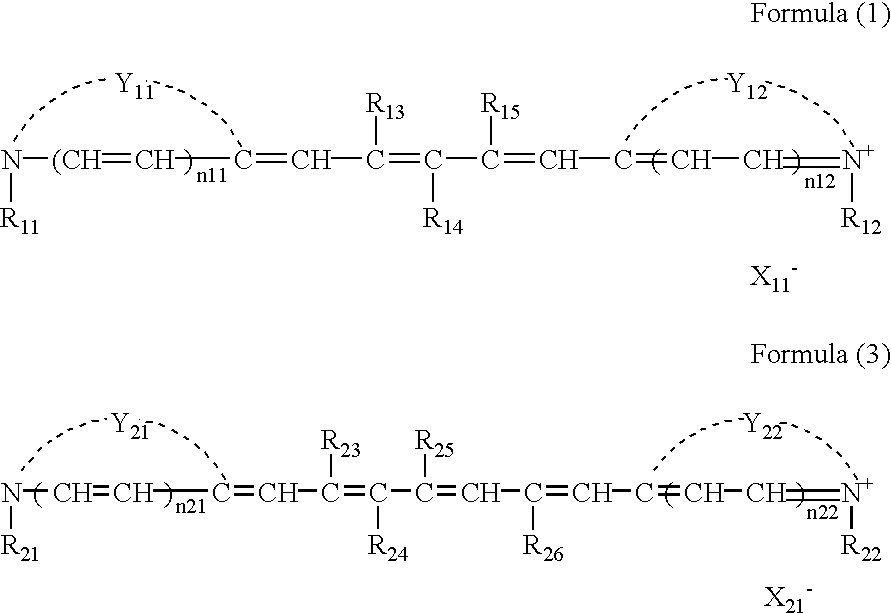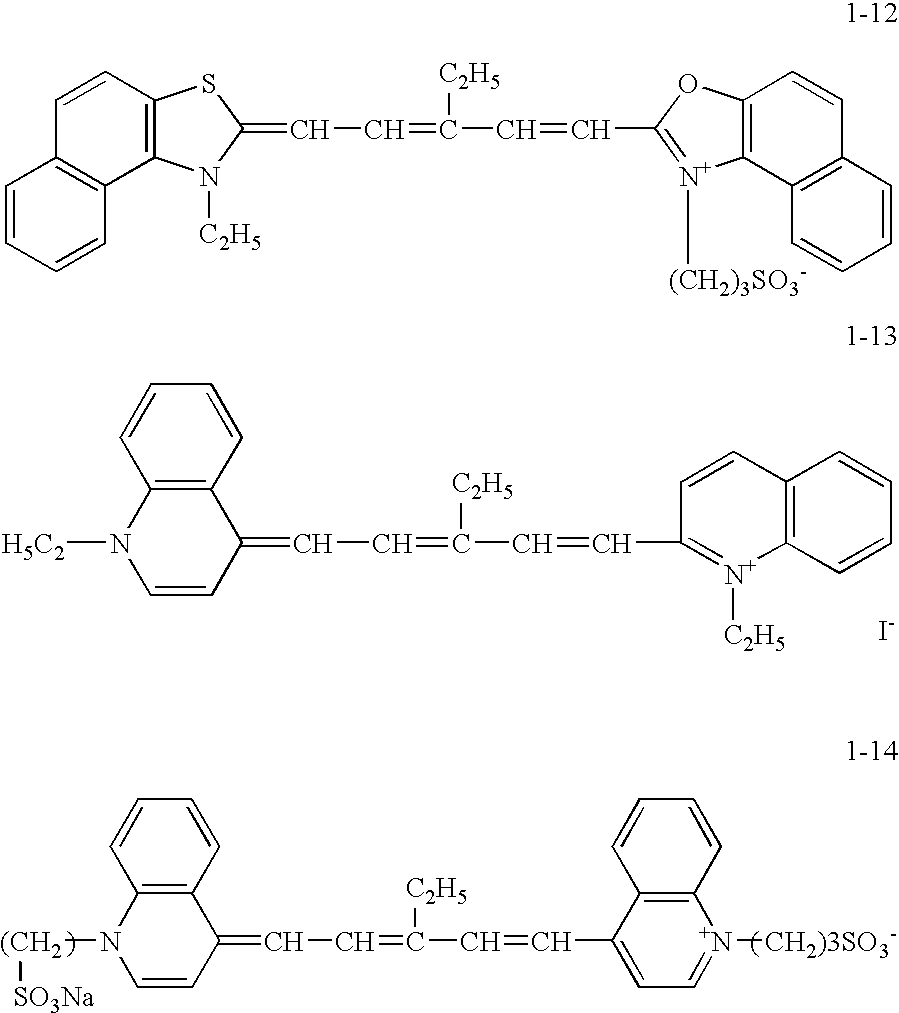Silver halide photographic material
a technology of silver halide and photographic material, applied in the field of silver halide photographic material, can solve the problems of lowering print productivity and finished print quality in photofinishing laboratories, excessive dark print, blurred images, etc., and achieves superior graininess, improved color stability, and superior image quality.
- Summary
- Abstract
- Description
- Claims
- Application Information
AI Technical Summary
Benefits of technology
Problems solved by technology
Method used
Image
Examples
example 1
Preparation of Sample 101
[0095]On a 120 μm thick, subbed triacetyl cellulose film support, the following layers having composition as shown below were formed to prepare a multi-layered color photographic material sample 101. The addition amount of each compound was represented in term of g / m2, unless otherwise noted. The amount of silver halide or colloidal silver was converted to the silver amount and the amount of a sensitizing dye (denoted as “SD”) was represented in mol / Ag mol.
[0096]
1st Layer: Anti-Halation LayerBlack colloidal silver0.13UV-10.30CM-10.11OIL-10.23Gelatin1.202nd Layer: InterlayerOIL-30.267Gelatin0.893rd Layer: Low-speed Red-sensitive LayerSilver iodobromide emulsion a0.31Silver iodobromide emulsion k0.22SD-11.28 × 10−4SD-21.78 × 10−5SD-38.40 × 10−5C-10.324CC-10.056D-10.014AS-20.002OIL-40.320Gelatin1.064th Layer: Medium-speed Red-sensitive LayerSilver iodobromide emulsion j0.08Silver iodobromide emulsion l0.40SD-12.56 × 10−4SD-23.50 × 10−5SD-41.72 × 10−4C-10.219CC-...
example 2
Preparation of Samples 201 Through 225
[0139]Samples 201 through 225 were prepared similarly to Sample 101 in Example 1, provided that the average grain size, aspect ratio, chemical sensitization condition and amount of silver iodobromide emulsion and amounts of coupler and colored coupler used in individual light-sensitive layer were varied so that the nominal speed, quality values QTN and minimum cyan density, as shown in Table 2, were achieved.
[0140]The thus prepared samples 201 through 235 were each packed into a cartridge and loaded into a commercially available single-lens reflex camera. Using the camera, a Macbeth Color Checker chart (comprised of 24 colored squares) was photographed under a light source having a color temperature of 4800° K at varying exposure in which the aperture of the cameral is reduced in 4 steps from the normal exposure (hereinafter, also referred to as −4 under-exposure) to an exposure in which the aperture was increased by 1 step from the norm...
example 3
[0162]Using processed Samples 101, 102, 103, 106 through 110, 111 through 113, and 116 through 118 of Example 1, evaluation was made as follows.
Evaluation (3-1): Color Quality of Digital Print of Under-Exposed Scene
[0163]Portrait scenes used in Example 1, including outdoor scenes against light and stroboscopic scenes, which were photographed at varying exposure from −2 under-exposure to +1 over-exposure of both sides of the normal exposure, based on center-weighted metering, while varying the object distance at 4 steps and background colors (gray, white, black, green and yellow), were printed on color print paper using an analog printer (KONICA QD21, produced by Konica Corp.). The digital printer was run under the condition that correction for local printing was automatically made. The thus obtained prints were evaluated by 10 people having experience in using the printer with respect to color image quality of finished prints (print level), taking account of occurrence of variation ...
PUM
| Property | Measurement | Unit |
|---|---|---|
| wavelength region | aaaaa | aaaaa |
| reflectance | aaaaa | aaaaa |
| wavelength | aaaaa | aaaaa |
Abstract
Description
Claims
Application Information
 Login to View More
Login to View More - R&D
- Intellectual Property
- Life Sciences
- Materials
- Tech Scout
- Unparalleled Data Quality
- Higher Quality Content
- 60% Fewer Hallucinations
Browse by: Latest US Patents, China's latest patents, Technical Efficacy Thesaurus, Application Domain, Technology Topic, Popular Technical Reports.
© 2025 PatSnap. All rights reserved.Legal|Privacy policy|Modern Slavery Act Transparency Statement|Sitemap|About US| Contact US: help@patsnap.com



